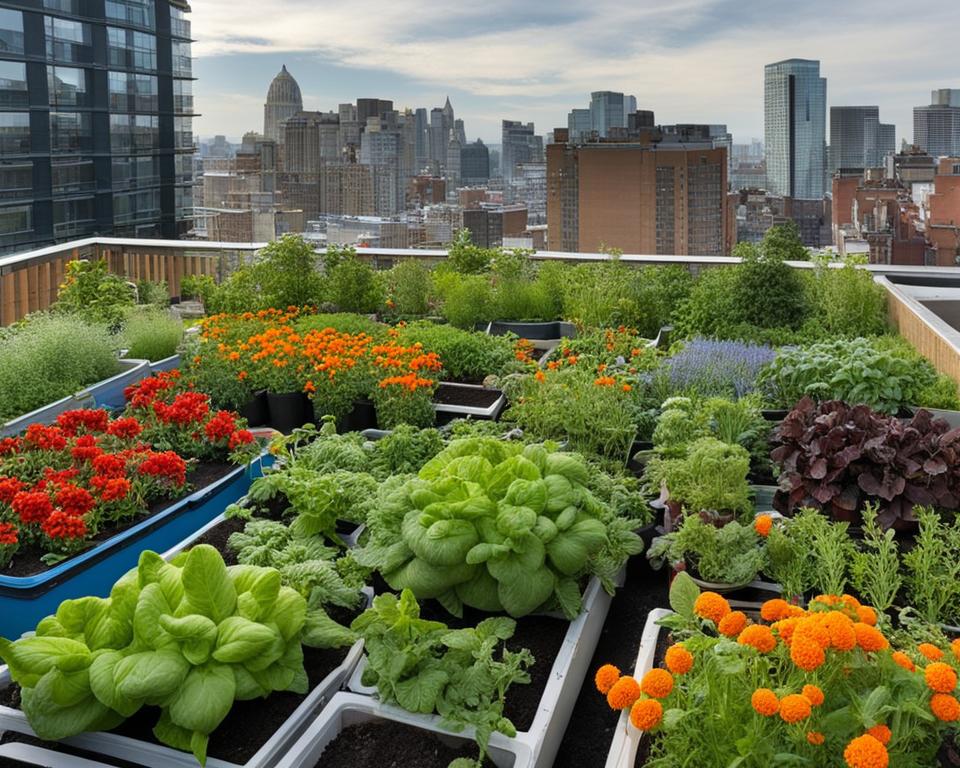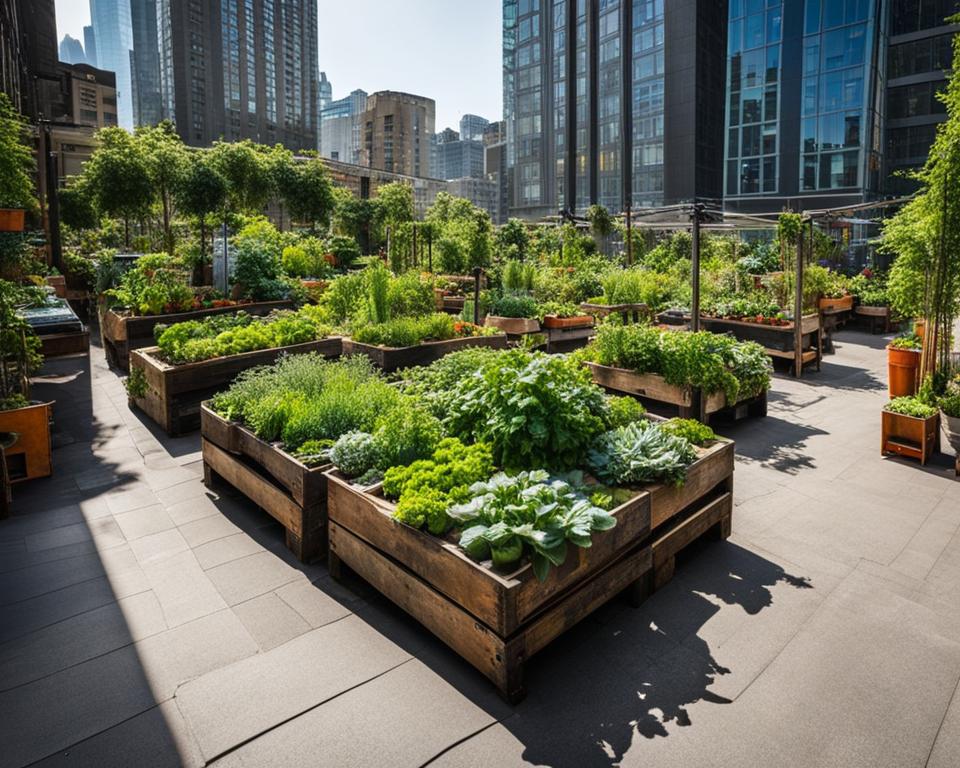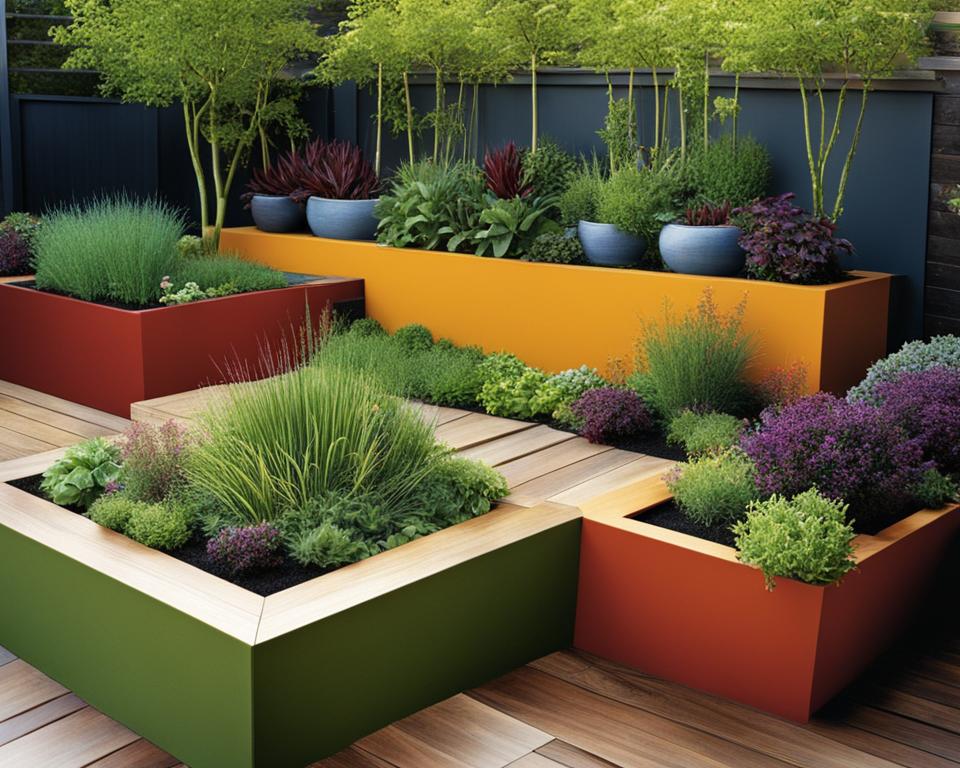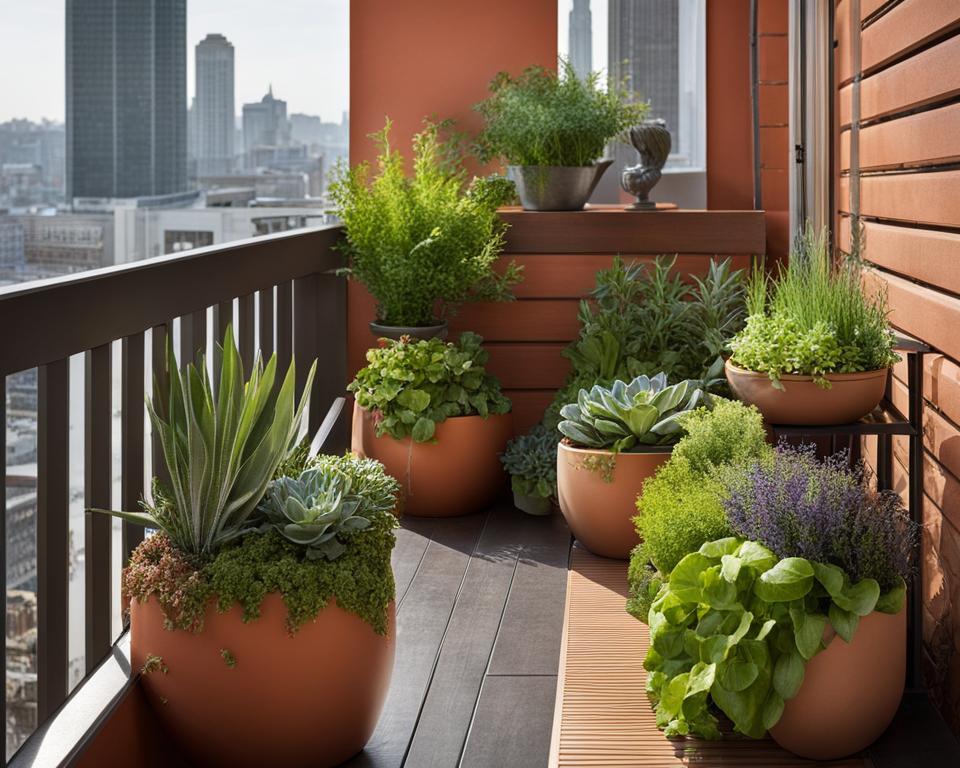If you’re nestled in the heart of the city and dreaming of homegrown tomatoes or craving the crunch of fresh lettuce, you may think your urban address limits your green thumb. Fortunately, urban organic gardening is within your reach! From the bustle of downtown to the compact spaces of high-rise apartments, starting an urban garden brings the joy of harvesting your own produce to any city setting. With innovative urban gardening ideas, turning your limited outdoor – or even indoor space into a lush, food-producing oasis is not just possible, it’s deeply fulfilling. So, let’s jump-start your journey to cultivating an urban green space with these beginner-friendly tips that honor both nature and the urban landscape.
Whether enlivening a small balcony or transforming a modest windowsill, every bit of space is an opportunity. Urban organic gardening entails maximizing your available space, utilizing eco-friendly practices and ensuring your sprouts and blooms are free from synthetic chemicals. And remember, sustainability starts small – sometimes as small as a single seed. So let’s get our hands dirty and make urban gardening ideas a flourishing reality right where you are. You’ll find that starting an urban garden can be not just a hobby but a transformative piece of your daily life in the city.
Key Takeaways
- Discover how to leverage limited space for urban organic gardening success.
- Learn the basics needed for starting a productive urban garden in the city.
- Explore creative and sustainable urban gardening ideas fit for any city dweller.
- Understand the benefits of growing your own food amidst urban environments.
- Gain insight into eco-friendly techniques that support healthy growth without harmful chemicals.
- Recognize the potential of even the smallest areas to contribute to urban greenery and freshness.
Embracing Urban Organic Gardening in Limited Spaces
Urban gardening for beginners often starts with finding creative ways to grow plants in compact areas. Even with minimal space, urban garden design allows you to reap the benefits of urban gardening right outside your door or on your balcony. With a little ingenuity and understanding of container and raised bed gardens, you can cultivate a vibrant and nourishing green space.
Container Gardening: Maximizing Your Urban Space
For those living in apartments or homes with small footprints, container gardening is a fantastic way to manage soil conditions, monitor sunlight exposure, and safeguard plants from colder temperatures. Not only can you grow a variety of plants in containers, but they also typically experience fewer weeds and pests. Embrace the ease of container gardening and watch your little urban oasis flourish.
Raised Bed Gardens: Edible Landscaping in Tiny Yards
Transform your tiny yard into an eye-catching garden with raised beds. Utilize every inch of your patio’s perimeter to grow edible delicacies like lettuce, herbs, and berries. Not only do these gardens provide fresh ingredients for your table, but they also enhance the beauty of your outdoor space, promoting environmental stewardship one plant at a time.
| Gardening Method | Advantages | Ideal for Growing | Maintenance Level |
|---|---|---|---|
| Container Gardening | Flexibility in location, easy pest control, and micro-climate management | Herbs, tomatoes, peppers, and ornamental plants | Medium |
| Raised Bed Gardening | Improved soil quality, better drainage, aesthetic appeal | Root vegetables, greens, and small fruiting shrubs | Low to Medium |
Embracing small-scale urban garden design has a multitude of benefits, from being a satisfying hobby to its potential to improve your overall well-being. It’s not just about the harvest; it’s about the journey of watching your efforts grow day-by-day into a lush, green haven. The benefits of urban gardening are within your reach, making it possible to cultivate your own slice of nature amidst the concrete jungle.
The Value of Urban Gardening in Today’s Cities
As you explore the concept of sustainable urban gardening, it becomes clear that the impact of such practices stretches far beyond just the boundary of personal nutrition and health. Urban gardening presents a unique intersection of societal benefits, cost-effective food solutions, and communal engagement, which is reshaping the way we view our urban spaces. It fosters a movement where urban agriculture becomes a central component of our cities’ identities and future.
Urban Agriculture: More Than Just Food Production
When one thinks of urban agriculture, the image of fresh produce growing amidst the cityscape typically comes to mind. However, its role extends much deeper. For instance, converting a vacant plot into a thriving community garden not only revitalizes the area but also promotes a sense of ownership and pride among local residents. Enumerable organic gardening tips are shared within these green corners, paving the way for sustainable living and knowledge transfer amidst a supportive community network.
The Psychological Benefits of Green Spaces
The introduction of greenery through urban gardening efforts conspicuously impacts the mental well-being of the community. Numerous studies showcase how these pockets of green can help in combating depression, reducing anxiety, and fostering a general sense of well-being. They are not merely spaces for cultivation but sanctuaries that provide a respite from the urban bustle, nurturing the mental and emotional health of city-dwellers.
Starting Your Urban Garden: A Beginner’s Guide
Embarking on the journey of starting an urban garden is a transformative experience that puts fresh food and vibrant greenery at your fingertips. Whether you live in an apartment with a sunny window or have access to a flat rooftop, urban gardening for beginners is all about utilizing the space you have to create your own lush oasis.
As a beginner, the vast world of urban organic gardening tips can seem overwhelming, but it’s truly about the basic building blocks: sunlight, water, and a bit of ingenuity. To help you get started, here are a few actionable steps:
- Determine Your Space – Assess the space available and the amount of sunlight it receives. Even the smallest balcony or windowsill can accommodate a few containers.
- Choose Your Plants – Start with easy-to-grow herbs and vegetables like basil, mint, tomatoes, and lettuce that thrive in small spaces.
- Gather Supplies – You’ll need potting soil, containers with drainage, seeds or seedlings, and basic gardening tools.
- Plan for Watering – Ensure you have a way to water your plants consistently. Consider a simple drip irrigation system or a watering can if your garden is small.
- Learn Basic Care – Understand the basics of caring for the plants you’ve chosen, including how often to water and when to harvest.
Remember, the appeal of urban organic gardening isn’t just in the harvest—it’s in the connection to nature, the satisfaction of cultivating life, and the impact on your well-being. So, roll up your sleeves, and let’s dig into this gratifying endeavor to greenify our urban spaces.
Organic Gardening Tips for Thriving City Gardens

As an urban gardener, you have the unique opportunity to create a lush oasis amidst the concrete landscape. The secret to a thriving green space lies in the harmony between your garden and the natural world, achieved through chemical-free practices and sustainable approaches. With these organic gardening tips, you’ll cultivate not only plants but also a deeper connection with the environment, right in your urban setting.
Cultivating Chemical-Free Gardens with Companion Planting
The beauty of companion planting lies in its simplicity and effectiveness. By placing certain plants next to each other, you can naturally deter pests and enhance your garden’s growth, all without the use of harmful chemicals. Imagine having your tomatoes thrive next to basil, which repels flies and mosquitos, or planting marigolds to fend off nematodes from your root vegetables. This method of planting is not just about pest control — it’s about creating a diverse, balanced ecosystem that supports the overall health of your garden.
Natural Soil Amendments: Composting in Small Spaces
Even with limited space, composting is a feasible way to give back to the earth and enrich your garden’s soil. Through composting, you transform kitchen scraps and yard waste into valuable organic material packed with nutrients, beneficial for your plants. This natural soil amendment improves soil texture, water retention, and can even help balance pH levels. Plus, composting reduces landfill waste, making it a win-win for your garden and the planet.
Here’s a simple guide to get started on composting in small spaces:
- Choose a small bin or tumbler that fits your space.
- Mix greens, like vegetable scraps, with browns, such as dried leaves.
- Turn your compost regularly to aerate it.
- Keep the compost moist, like a wrung-out sponge.
- Use finished compost to condition your soil and nourish your plants.
| Natural Soil Amendments | Benefits |
|---|---|
| Compost | Improves soil structure, adds vital nutrients |
| Worm Castings | Enhance soil aeration and drainage |
| Coffee Grounds | Adds nitrogen to the soil, increases acidity |
| Eggshells | Provides calcium carbonate, good for cell growth in plants |
Integrating these urban organic gardening techniques allows you to maximize the potential of your city garden. By cultivating with care and respect for nature, your little plot of land can become a thriving ecosystem, providing fresh produce, clean air, and a sanctuary for pollinators amidst the urban jungle.
Urban Gardening Techniques
As an urban dweller, mastering innovative urban gardening techniques allows you to transform even the smallest spaces into lush, productive green areas. These methods are perfect for embracing edible landscaping in your personal habitat, providing both aesthetic beauty and nutritional bounty. Let’s delve into some of the most effective techniques that can help you cultivate a vibrant garden, regardless of your space constraints.
Exploring Hydroponics and Vertical Gardening
Imagine growing your favorite herbs and vegetables without the need for soil. Hydroponics is a soil-less gardening method that uses a nutrient-rich water solution to grow plants, which can be more efficient and less labor-intensive than traditional gardening. Alongside hydroponics, vertical gardening systems allow you to grow upwards, stacking plants in layers and making full use of vertical space available on balconies, patios, or even indoor walls.
Protective Microgreens and Sprouting Indoors
Do you have limited outdoor space or lack a balcony for a garden? No worries! Growing microgreens and sprouting seeds indoors can be your gateway to fresh, organic produce year-round. These tiny greens are packed with flavor and nutrients, and they can be harvested within just a few days of planting, making them an ideal choice for fast-paced urban life.
| Technique | Key Benefits | Space Requirement |
|---|---|---|
| Hydroponics | Uses less water, no soil needed, controllable environment | Flexible, varies by system size |
| Vertical Gardening | Maximizes limited space, adds greenery to walls | Minimal ground space, utilizes vertical space |
| Indoor Microgreens | Quick to harvest, nutrient-rich, can be grown year-round | Small trays on windowsills or under grow lights |
Whether you decide to grow an elaborate hydroponic system or a modest tray of microgreens, the key is to start. Embrace the green revolution within your urban abode and transform the way you think about food, nature, and city living. Your journey towards sustainable and fresh eating habits begins right in your own home with these accessible urban gardening techniques.
Sustainable Urban Gardening Practices

As you cultivate your own urban oasis, consider the benefits that sustainable urban gardening brings to the environment. With a few smart strategies, you can conserve water, enhance soil quality, and remove pollutants from your urban landscape. Embracing these practices not only supports the well-being of the planet but also ensures that your garden thrives in a way that is harmonious with the surrounding environment.
Water Conservation Strategies in Urban Settings
Conserving water is a pivotal aspect of sustainable urban gardening. In an urban setting, you can utilize practices like rainwater harvesting to capture rainfall with barrels or cisterns, which reduces reliance on municipal water supplies. Drip irrigation and soaker hoses strategically deliver water to plant roots with minimal waste. Additionally, selecting drought-tolerant plants can contribute to significant water savings.
Understanding Bioremediation Through Plant Selection
Bioremediation is the process of using plants to detoxify and restore balance to the soil and water in urban areas. By choosing plants that have a natural ability to absorb and break down pollutants, you actively improve the environmental quality of your garden and its surroundings. It’s a symbiotic relationship where the garden not only becomes more sustainable but also contributes positively to urban ecological health.
| Technique | Benefits | Examples |
|---|---|---|
| Rainwater Harvesting | Reduces water bills, eases demand on municipal water | Barrels, cisterns, rain chains |
| Low-Water Irrigation | Minimizes water use, targets plant root zones | Drip systems, soaker hoses |
| Drought-Tolerant Plants | Requires less watering, resilient to dry conditions | Succulents, native grasses |
| Bioremediative Plants | Cleanses soil and water, improves air quality | Sunflowers, poplar trees |
By integrating water conservation and bioremediation into your urban gardening, you’re not just growing plants; you’re nurturing a sustainable future for your city. The choices you make can have a profound impact, turning a small garden into a powerful tool for environmental change.
Benefits of Urban Gardening
Delving into the practice of urban gardening not only nurtures your green thumb but also comes with an array of tangible benefits that permeate various aspects of life. Revolving around the benefits of urban gardening, it’s crucial to explore how this growing movement reaches beyond the confines of personal enjoyment to impact your health, community, and environment positively.
One of the most immediate organic gardening benefits is the enhancement of local food systems. By decreasing reliance on distant food sources, you help reduce transportation’s carbon footprint, bringing forth fresher and more nutritious options right to your plate. Here’s a closer look at how urban organic gardening advantages can transform your lifestyle and surroundings:
- Nutritional Boost: Homegrown produce tends to be richer in vitamins and minerals, owing to the minimized time between harvest and consumption.
- Economic Empowerment: By cultivating your own fruits, vegetables, and herbs, you can cut down on grocery bills and, in certain scenarios, even generate supplementary income.
- Mental Wellness: Engaging with nature through gardening has been linked to stress relief, improved mood, and overall mental health.
Aside from individual benefits, urban gardening positively influences urban settings through:
- Beautification of neighborhoods, which enhances the community’s overall aesthetic and morale.
- Creation of habitats for essential pollinators crucial for maintaining biodiversity within urban landscapes.
- Improvement of air quality as plants act as natural air filters, absorbing pollutants and emitting oxygen.
Let’s quantify these benefits through an illustrative table:
| Benefit | Personal Impact | Community Impact | Environmental Impact |
|---|---|---|---|
| Food Miles Reduced | Healthier eating habits | Local economy support | Less pollution |
| Green Spaces | Mental well-being | Strengthened community bonds | Urban biodiversity growth |
| Economic Savings | Reduced grocery expenses | Increased local employment | Resource conservation |
Through this lens, we can see how urban gardening cultivates a robust ecosystem where ecological, financial, and social dimensions intertwine. Adopting this lifestyle invites a cascade of urban organic gardening advantages that touch the roots of how we live, thrive, and interact within our urban jungaries.
Overcoming the Challenges of Urban Organic Gardening

Embarking on the journey of starting an urban garden in the city brings forth unique challenges that require innovative solutions and determination. Urban gardening challenges often revolve around overcoming spatial constraints and tackling environmental pollutants. Yet, with the right mindset and urban garden design techniques, thriving gardens can bloom even in the most unexpected urban nooks. Let us explore how you can surmount these obstacles and cultivate a lush urban retreat.
Dealing with Spatial Restrictions and Property Ownership
One common hurdle is the lack of space, particularly for tenants without direct access to land. However, renting should not dampen your green aspirations. Container gardening and vertical gardening are practical solutions that make efficient use of any available space, be it a sunny windowsill, a balcony, or even a shared rooftop. These approaches allow you to maximize your green footprint without violating lease agreements or requiring large plots of land.
| Challenge | Container Gardening | Vertical Gardening |
|---|---|---|
| Limited Ground Space | Utilizes pots and planters that can be arranged on any flat surface | Transforms vertical surfaces into growing areas, expanding upwards |
| Soil Quality Concerns | Allows for complete control over the soil environment | Use of hanging containers can provide clean soil free from ground contamination |
| Mobility | Containers can be moved to optimize sun exposure and weather conditions | Modular systems can be dismantled and transported |
| Lease Restrictions | Does not alter the permanent structure of the living space | Can be installed without damaging property |
| Personalized Aesthetics | Planters offer diverse designs to match personal style | Vertical structures serve as natural art pieces |
Contending with Environmental Factors: Pollution and Noise
As urban gardeners, you’re also faced with combating pollution and noise—elements that often seem inseparable from city life. The key lies in selecting plants that not only survive but also help mitigate these urban factors. Consider species that can tolerate exposure to pollutants and those known for their noise-dampening qualities. Incorporating features such as water fountains or thick hedges can provide a double benefit: counteracting noise pollution and enhancing the serene ambiance of your urban garden.
Armed with a strategic approach to urban garden design, even the most daunting obstacles can be turned into opportunities for growth and creativity. Remember, each small urban garden contributes to the larger mosaic of green spaces taking root in cities worldwide.
Urban Organic Gardening as a Community Initiative
Imagine strolling through your neighborhood and stumbling upon a verdant patchwork of vegetable beds, fruit trees, and flowers, all nestled between the familiar facades of city buildings. This picturesque scene is rapidly becoming a reality as urban organic gardening burgeons into a thriving community initiative. With the growth of community gardens and pocket parks, urban dwellers are reclaiming untapped land to cultivate both crops and community spirit.
Pocket Parks and Community Gardens: The Social Aspect
These small-scale havens, often termed ‘pocket parks’, emerge on vacant lots, offering an oasis of green in the concrete desert. They’re a physical platform for the urban gardening community to share knowledge, tools, and the fruits of their collective labor, forging an interwoven social fabric in the process. Not just plots of land; these community gardens are plots of potential – for social gatherings, education, and sustainable living.
As you join your fellow urban farmers, you’re not merely planting seeds, but also the roots of camaraderie. Community gardens bolster a unique brand of neighborliness, encouraging a diversity of people to work towards a common goal: a healthier, greener neighborhood.
Engaging Neighbors to Create Green Urban Oases
The power of gardening extends beyond the boundaries of individual plots. As you engage with your neighbors, you’ll find that each person brings their unique skills and insights to the table, transforming singular efforts into a collective triumph. Turning shared visions into reality, you’ll witness the transformation of underutilized spaces into flourishing community gardens and pocket parks, spearheading an urban ecological resurgence.
There is something profoundly satisfying about nurturing a plant from seed to harvest, and when that experience is shared with a community, it does more than feed the body—it nourishes the soul. You now have access to a collaborative project that yields much more than produce: it cultivates resilience, togetherness, and the shared joy of fostering a greener city life.
Designing Your Urban Garden for Aesthetics and Function

When you set out to shape your urban space into a green haven, you’re not just planting seeds; you’re crafting a living artwork that integrates both form and utility. It’s a delicate balance that requires creativity, especially with the limited square footage typical of city living. Urban garden design is more than just placing a few potted plants around; it’s about creating a living ecosystem that can flourish in unlikely places.
Creative Urban Garden Design for Small Spaces
Your journey into urban garden design can transform mere walls and rooftops into flourishing landscapes. With imagination, even the most compact areas can become bountiful sanctuaries. Utilize stackable planters, hanging pots, or trellises to create a vertical garden that climbs towards the sun. These setups not only save valuable floor space but also add an intriguing visual element to your urban backyard.
Remember, every inch of your space has potential – your railings could host climbing vines, while balcony edges can support troughs brimming with herbs and flowers.
Living Walls and Green Roofs: Urban Biodiversity
Living walls and green roofs are at the forefront of urban biodiversity, heralding new life in the concrete jungle. These designs can thermally insulate buildings, reduce energy costs, and filter pollutants, all the while contributing to the aesthetic beauty of your neighborhood. By choosing a diverse palette of plants suited to your local climate, you can play a direct role in enhancing urban biodiversity and creating a habitat for beneficial insects and birds.
- An integrated water system in your living wall can help sustain a wide variety of plants.
- Green roofs can double as recreational spots, improving overall quality of life.
- Select native species for your green infrastructure to support local ecosystems.
Your urban garden is not just a space for you to unwind; it’s a valuable asset to the urban ecosystem. Embrace the potential of living walls and green roofs to create a patch of nature that benefits everyone, from your neighbors to local wildlife. In crafting these spaces, you help bring a touch of the wild into the urban panorama.
Urban Organic Gardening
The movement towards urban organic gardening is coloring our cityscapes with an array of edible delights, transforming concrete terrains into lush, edible landscapes. By integrating edible plants into the everyday scenery, urban dwellers are reinventing their relationship with the urban environment. It’s a rewarding way to enhance sustainability while ensuring that every square foot of space is utilized to its full potential.
Imagine stepping outside your door into a world where nature meets urbanity, where fresh tomatoes and fragrant herbs adorn former wasted spaces. It’s a step towards a more resilient city ecosystem.
The Integration of Edible Plants into Urban Landscapes
Introducing edible landscaping into urban areas isn’t just a trend; it’s a lifestyle adaptation that enriches your health and the health of your community. With every community garden and green roof, residents are laying the groundwork for a future where nature and city life coexist harmoniously.
Urban Organic Gardening’s Role in Sustainable City Development
Urban organic gardening plays a crucial role in sustainable city development, promoting eco-friendly living and reducing the urban heat island effect. By implementing organic practices, cities reduce their carbon footprint and provide habitats for beneficial wildlife, thereby bolstering citywide sustainability efforts.
| Benefits of Urban Organic Gardening | Impact on Sustainable City Development |
|---|---|
| Access to Fresh, Healthy Produce | Reduces Food Miles & Carbon Emissions |
| Enhancement of Biodiversity | Supports Urban Wildlife & Pollinators |
| Beautification of Urban Spaces | Stimulates Eco-Consiousness among Residents |
| Educational Opportunities | Encourages Sustainable Lifestyles & Waste Reduction |
As you dive into the world of urban organic gardening, you’re contributing far more than you might realize. You’re becoming a part of a growing movement that values sustainable city development and the well-being of urban communities.
Conclusion
Embracing urban organic gardening is more than adopting a hobby; it’s a commitment to nurturing a dynamic ecosystem right at your doorstep. As you integrate sustainable urban gardening practices into your daily life, you’ll discover a world where your hands can directly contribute to food security and ecological stewardship. The beauty of this movement lies in its ability to offer practical urban gardening ideas that fit into the hustle of city living, transforming your living spaces into vibrant pockets of greenery.
The benefits of urban gardening extend beyond the simple joy of cultivating your own produce. From enhancing your diet with fresh, nutritious foods to contributing to environmental health by reducing your carbon footprint, your garden is a stepping stone towards a more sustainable future. The mental clarity and sense of accomplishment gained through tending to your plants are invaluable, building a peaceful sanctuary amidst the urban chaos. Together, these elements cultivate a scenario where both your well-being and the planet’s are intricately interwoven.
Your role in this green revolution symbolizes a crucial shift towards a sustainable and empowered community. Not only do you gain the satisfaction of growing your own food, but you also play a part in the larger picture of sustainable city development. Urban organic gardening is not just an individual endeavor but a collaborative effort that paints a vision of greener, more resilient cities. It’s a testament to the fact that with creativity, dedication, and a little bit of soil, you can sow the seeds for a healthier, greener future right in your urban backyard.
FAQ
What are some urban organic gardening tips for city dwellers?
To thrive in urban gardening, you’ll want to optimize your space with container gardening and raised beds, pick plants suited for your microclimate, use natural soil amendments like compost, engage in companion planting to manage pests, and take advantage of vertical spaces with trellises or green walls.
How can I embrace urban gardening in a limited space?
Even with space constraints, you can effectively garden by utilizing containers and raised beds to maximize your growing area. Focus on compact plant varieties and consider indoor options like window sills for herbs or microgreens. Employ vertical gardening techniques to grow upwards instead of outwards.
What are the environmental benefits of urban gardening?
Urban gardening contributes to a healthier environment by improving air quality, promoting biodiversity, and fostering sustainability through practices like water conservation and bioremediation, which help to clean the soil and water. It also reduces food miles when you grow produce where you live.
How do I start an urban garden as a beginner?
Begin by researching which plants are suitable for your area and the type of space you have available. Start small with easy-to-grow herbs and vegetables, utilize containers or small raised beds, and take advantage of local community resources or gardening groups for advice and support.
What organic gardening tips can help my city garden thrive?
Use organic seeds and soil, practice companion planting to deter pests, compost to improve soil health naturally, and choose plants that are naturally resistant to diseases common in your area. Also, consider attracting beneficial insects by planting a diversity of species.
Can you suggest some urban gardening techniques for limited spaces?
Beyond raised beds and container gardening, look into hydroponics for soil-less gardening, vertical gardening to save space, and growing microgreens indoors. These methods allow you to grow an abundance of produce in a small footprint.
What sustainable practices should I consider in urban gardening?
Sustainable urban gardening practices include using recycled materials for planters, harvesting rainwater for irrigation, practicing integrated pest management, and selecting plants that assist in cleaning up urban pollutants, known as phytoremediation.
What are the broad benefits of urban gardening?
In addition to providing you with fresh, organic produce, urban gardening enhances mental health, promotes physical activity, contributes to community building, and brings economic benefits by reducing grocery bills. Additionally, it creates green spaces that contribute to the urban ecosystem.
How can I overcome the challenges of urban organic gardening?
For space limitations, focus on vertical or container gardens. To address property constraints, opt for portable or temporary solutions like window boxes or community garden plots. For environmental challenges, select hardy plants that can cope with your specific urban conditions, and use natural barriers or filters to mitigate pollution.
How does urban organic gardening work as a community initiative?
Urban gardening often flourishes as a community effort with community gardens and educational programs that bring people together. These initiatives can transform underused areas into productive green spaces and help foster a sense of community ownership and pride.
What are some urban garden design ideas for aesthetics and function?
To combine beauty and productivity, incorporate elements like living walls and green roofs, use aesthetically pleasing containers, and arrange plants in visually interesting patterns. Select a mix of edible and ornamental plants to create a garden that feeds both the body and soul.
How does integrating edible plants impact urban landscapes?
Integrating edible plants into urban landscapes reclaims underutilized spaces for food production, supports local ecosystems, and provides residents with fresh, healthy produce. It’s a step towards self-sufficiency and resilience in urban communities.
What role does urban organic gardening play in sustainable city development?
Urban organic gardening is integral to sustainable city development by promoting local food systems, reducing waste through composting, encouraging green space preservation, and bringing nature back into urban areas, thus improving the quality of life for city dwellers.

